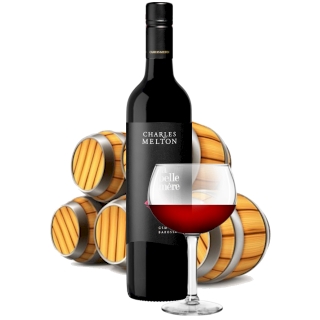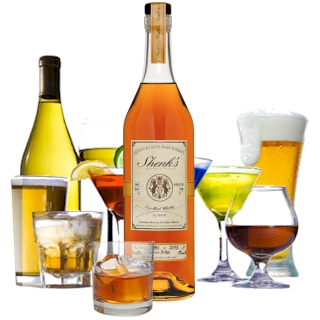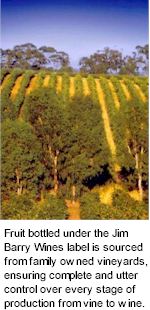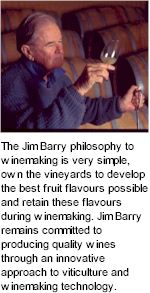


In his 57 years of winemaking, the late Jim Barry saw many changes. Jim Barry graduated from Roseworthy Agricultural College in 1947 and was offered a position at the Clarevale Cooperative, becoming the first qualified winemaker to work in the Clare Valley. In 1959 Jim and his wife Nancy purchased their first property on the northern outskirts of Clare and in 1964 purchased 70 acres of land from Duncan McRae Wood, part of which now forms the famous Armagh vineyard. With a growing family to look after, Jim took on the challenge of establishing his own winery and cellar door, with the first home-made wines being produced in 1974. "When I first came to the Clare Valley, grapes were delivered by horse and cart. Today our business is international but one thing won't change, at the end of the day, the wines are what matters!"

The Jim Barry philosophy to winemaking is very simple, own the vineyards to develop the best fruit flavours possible and retain these flavours during winemaking. Fruit bottled under the Jim Barry Wines label is sourced from family owned vineyards, ensuring complete and utter control over every stage of production from vine to wine. Jim Barry Wines has four distinctive climatic and geographical sites in the Clare Valley. Watervale towards the southern end of the Valley, Lodge Hill in the eastern ranges, vineyards at the northern entrance to Clare and Armagh to the west. In addition, the company has a 14 hectare Cabernet Sauvignon vineyard in the Coonawarra region.
The Florita vineyard at Watervale is one of the area’s oldest. This is the vineyard where legendary winemaker, John Vickery, sourced the grapes for his great Leo Buring Rieslings of the 1960s and 1970s. At a time when the South Australian Government had initiated a vine pull program to counter an oversupply of grapes, Jim Barry went against conventional wisdom and purchased the Florita vineyard. Despite fruit being in oversupply and Riesling being overshadowed by a huge surge in popularity by Chardonnay, they knew that Florita was one of the best vineyards in the country and was crucial in their plans to produce premium Rieslings.
The first time Jim Barry walked on the soils of Lodge Hill in 1977, he knew it was a special site. It now produces two of Jim Barry’s most famous wines – The Lodge Hill Riesling and The Lodge Hill Shiraz. At 480 metres, the Lodge Hill vineyard, situated on the eastern ranges of the township of Clare, is one of the highest points in the Valley. Jim’s original intention was to devote the entire Lodge Hill vineyard to premium Riesling. The soil in the Riesling vineyard, on the other side of the crest, is brown loam over a layer of clay and slate bedrock that is about 900 million years old and has cracked just off the vertical so that water can drain freely through it. It’s a soil that nourishes the vines adequately, but makes them struggle just a bit, making it suited to growing intensely flavoured, finely structured Rieslings.

However, while he was pottering around with his trusty shovel, digging here and there, he discovered a very different soil profile on the small north-facing slope. Warmer than the rest of the property, Jim decided it was the perfect place to plant Shiraz. So in essence, there are two vineyards within the one. The Shiraz vineyard's soil consists of about 40-50 centimetres of rich, chocolaty loam over rock, consisting of almost vertical sheets. The cracks between the sheets have been filled with soil, providing passage for the vine roots and free drainage – the ideal environment for low-yielding Shiraz vines.
The Armagh Shiraz has achieved extraordinary success and is regarded as one of Australia's highest quality wines. The vineyard was named after the adjoining hamlet of Armagh, established by Irish settlers in 1849 and named after the lush rolling hills of their homeland. Jim Barry planted the 3.3 hectare vineyard in 1968 with Shiraz clones originally sourced from Israel. The vineyard is planted on its own roots on grey sandy abrasive topsoil over clay subsoil and receives an average rainfall of 600 millimetres per year. Such is The Armagh vineyards suitability that minimal intervention is needed to maintain yields below 4 tonnes per hectare, which produce rich and concentrated fruit of the rare quality required to produce wines with ageing potential.
On the southern boundary of Coonawarra is the old Penola cricket ground, which first saw a ball bowled in anger and the flashing cover drives of local champions in 1950. Jim Barry always had an affection for Coonawarra and the region's fabulous Cabernet Sauvignon fruit, so when the property went on the market, the opportunity to transform it into a vineyard was too good to miss. To preserve a little piece of Coonawarra cricketing history, the original pavilion was retained and the vines were planted around the cricket pitch. Jim Barry today, maintains the traditions of a family run winery committed to producing quality wines through an innovative approach to viticulture and winemaking technology.
